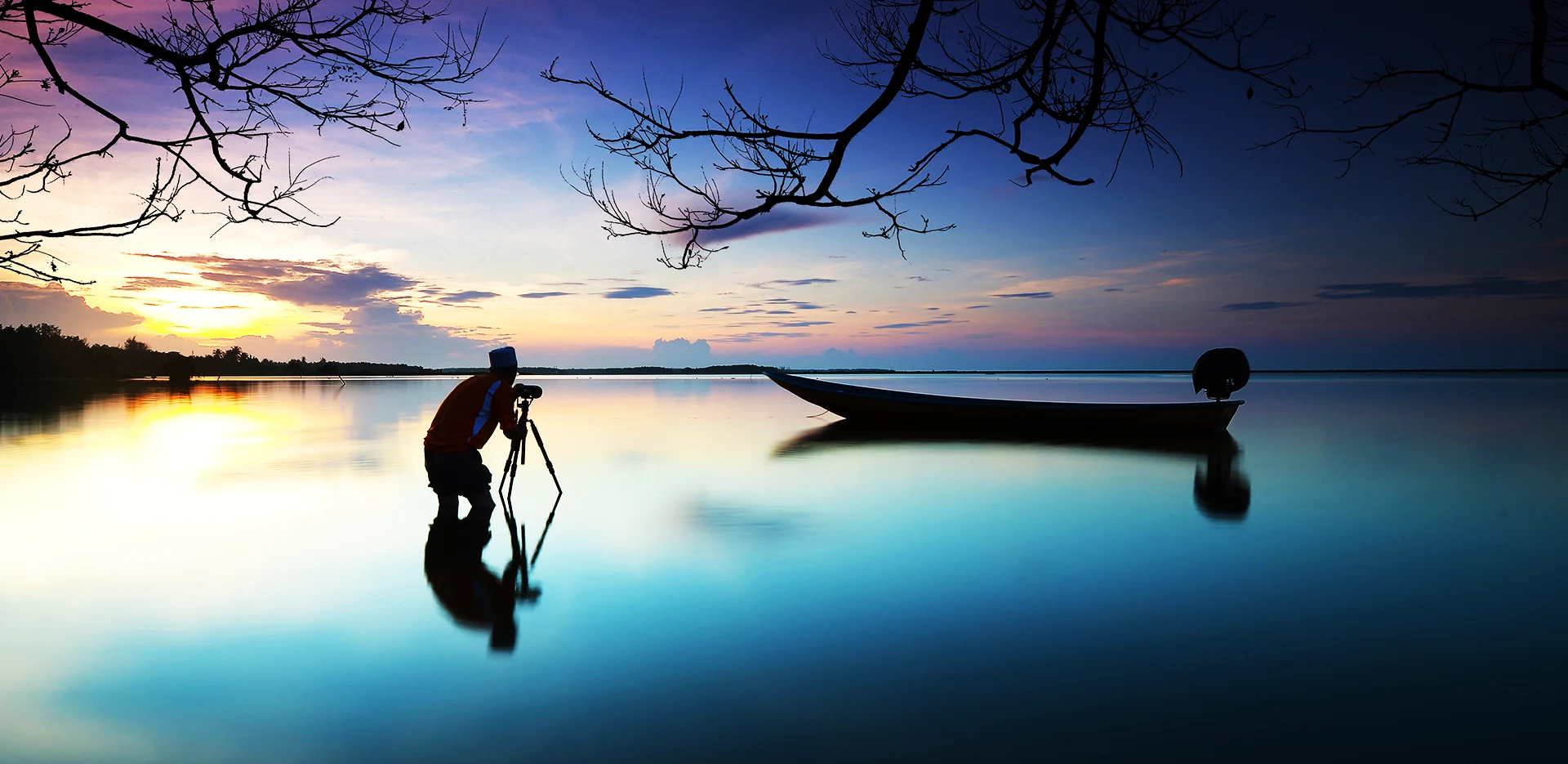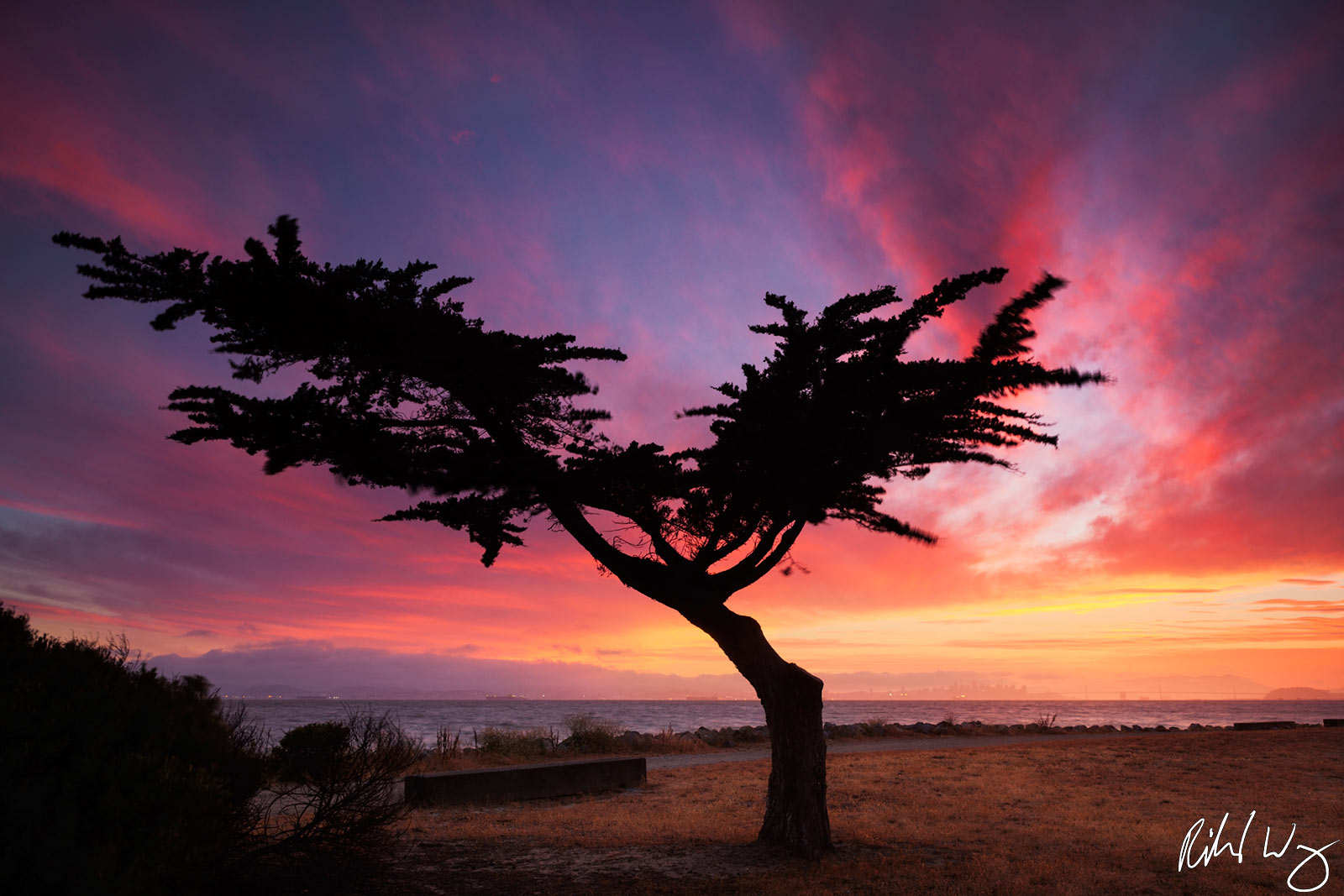Exploring Landscape Photography: Capturing Natural Beauty in Outdoor Activities

Exploring the Allure of Landscape Photography
Landscape photography is more than just capturing images; it allows us to engage deeply with the world around us. Each photograph has the potential to transport viewers to stunning locations, evoking feelings of serenity, wonder, and adventure. In this genre, photographers often strive to bring out the intricate details of nature’s vast palette, portraying everything from the tranquil stillness of a lake at dawn to the rugged grandeur of cliffside vistas.
Natural Wonders: These captivating formations serve as the backbone of many memorable landscape photographs. Iconic sites like the Grand Canyon, with its layered red rock formations and intricate river systems, present endless opportunities for unique compositions. Similarly, Yellowstone National Park boasts a variety of geothermal features, including the mesmerizing Old Faithful geyser. When captured at the right moment, the eruption becomes a stunning display of nature’s power, providing a visual feast that can resonate with anyone who appreciates the natural world.
Dynamic Lighting: The beauty of a landscape can shift dramatically throughout the day, primarily influenced by light conditions. The golden hour, occurring shortly after sunrise or just before sunset, bathes landscapes in warm, soft hues, often transforming an ordinary scene into something extraordinary. Photographers often seek out this natural light to enhance their compositions, capturing the way it interacts with the environment, creating shadows and highlights that add depth and texture. The interplay between light and landscape can be a powerful storytelling device, revealing the history and emotion tied to a location.
Diverse Ecosystems: The rich variety of ecosystems across the United States offers an expansive canvas for photographers. From the dry, rugged terrain of the Mojave Desert to the lush forests of the Pacific Northwest, each landscape presents its own set of challenges and opportunities. For instance, capturing the delicate balance of a coastal ecosystem requires an understanding of tidal movements and the interplay between land and sea. Similarly, the annual migrations of animals and their seasonal behaviors can be documented, providing insight into the intricate relationships within these environments.
As photographers traverse the nation, national parks emerge as prime locations for landscape photography. The vastness of places like Yosemite, with its granite cliffs and cascading waterfalls, illustrates nature’s majesty. Moreover, capturing the coastal area of Big Sur, with its dramatic cliffs meeting the Pacific Ocean, highlights how diverse these settings can be. Each of these locations not only offers spectacular visuals but also poses unique logistical challenges, from navigating rugged terrains to understanding weather patterns.

For those keen on delving into landscape photography, understanding the foundational techniques can significantly enhance the experience. As you prepare for your photographic journey, consider investing time in mastering composition, light manipulation, and even post-processing skills. Immerse yourself in the landscapes and allow your camera to reveal the stories these environments hold. This exploration ensures that your landscape photography not only captures images but also encapsulates the awe of our natural world.
DIVE DEEPER: Click here to discover the art of molecular gastronomy
Essential Techniques for Landscape Photography
To fully harness the mesmerizing beauty of nature through landscape photography, understanding and executing basic techniques is paramount. This genre of photography thrives on capturing the essence of the outdoors, from awe-inspiring mountains to serene lakes, and each location demands specific skills and approaches. Here are some essential techniques to elevate your landscape photography:
1. Mastering Composition
The strength of any photograph often lies in its composition. Utilizing techniques such as the Rule of Thirds helps in creating balanced images that are visually appealing. Imagine breaking the viewfinder into a grid of nine squares; place points of interest along the lines or at their intersections. This method leads the viewer’s eye into the frame rather than simply staring at the center.
Additionally, using leading lines can guide the viewer’s gaze through the photo, enhancing depth and interest. Rivers, roads, and pathways can act as natural lines, inviting the observer to explore the scene further. Framing is another powerful technique, where elements in the foreground—like trees or arches—enclose the main subject, creating a sense of depth and context.
2. Understanding Light and Weather
The importance of light in landscape photography cannot be overstated. Natural light varies throughout the day, influencing how colors are rendered and shapes are perceived. In addition to the golden hour, which provides the soft, inviting tones that many photographers adore, it’s crucial to understand how different weather conditions—such as fog, storms, or clear blue skies—transform the landscape. Overcast days can offer even, diffused light that eliminates harsh shadows, often aiding in enhancing texture.
3. Utilizing Proper Gear
Investing in the right gear can greatly enhance the quality of your landscape photographs. A sturdy tripod is essential for long exposure shots, particularly in low light conditions. The tripod ensures stability, allowing photographers to use slower shutter speeds without blurring motion. Additionally, consider using a wide-angle lens to capture expansive landscapes, capturing more of the scene without sacrificing detail.
- Wide-Angle Lens: Perfect for expansive vistas.
- ND Filters: Help manage light, allowing for longer exposures without overexposure.
- Polarizing Filters: Enhance colors and reduce glare from reflective surfaces.
4. Post-Processing Techniques
While capturing breathtaking images in-camera is vital, the art of post-processing can elevate your work to new heights. Software like Adobe Lightroom and Photoshop allows for fine-tuning aspects like exposure, contrast, and saturation. It’s essential, however, to approach editing with moderation; the goal is to enhance the photograph while still preserving the authenticity of the scene.
By mastering these foundational techniques, photographers can more effectively explore the stunning landscapes that nature offers, capturing not just images but the very essence of our beautiful planet. As you venture outdoors, remember that patience and practice are key to bringing your artistic vision to fruition.
Exploring Landscape Photography: Capturing Natural Beauty in Outdoor Activities
Landscape photography is not merely about capturing the vistas around us; it is an art form that encapsulates the essence of nature, showcasing its intricate beauty through the lens. Photographers venturing into the wild are often armed with tools and techniques to highlight the uniqueness of outdoor activities, be it hiking, camping, or simply immersing oneself in nature. Every shot taken tells a story of adventure, exploration, and serenity.
The choice of location profoundly impacts the photograph’s aesthetic value. From rugged mountain ranges to serene lakes, every landscape exudes character and invites the viewer to witness its majesty. Golden hour, the time shortly after sunrise or before sunset, presents the golden light, casting shadows and enhancing colors, making it the ideal time for photography. Understanding how different natural elements interact with light can unlock spectacular photographic opportunities.
Moreover, composing a photograph involves much more than just framing the image. The rule of thirds, leading lines, and foreground interest give viewers a pathway into the photograph, drawing them into the experience. This is crucial in landscape photography, where the aim is to guide the viewer’s eye through the image effectively.
| Category | Key Characteristics |
|---|---|
| Composition | Utilizing techniques like the rule of thirds and leading lines enhances photo storytelling. |
| Lighting | Golden hour provides the perfect lighting for landscape photography, enriching colors and textures. |
Every landscape photographer knows that patience is as crucial as skill; waiting for the perfect moment can result in stunning imagery. Understanding your surroundings and being fully present allows for a deeper connection with nature, which is often reflected in the photographs taken. With the right techniques and a keen eye, capturing the beauty of the outdoors becomes an exhilarating journey, one that encourages us to explore every nook and cranny of the world around us.
DIVE DEEPER: Click here to discover how music can spark your creativity
Advanced Tips for Capturing Stunning Landscapes
For those who have grasped the foundational techniques of landscape photography, venturing into more advanced strategies can lead to stunning results that capture the breathtaking beauty of the outdoors. As photographers continue to hone their skills, here are some advanced tips to take your landscape photography to the next level:
1. Experimenting with Different Perspectives
The perspective from which a photo is taken dramatically influences its impact. Don’t just stick to eye-level shots; explore different angles by getting low to the ground or climbing to a higher vantage point. Bird’s-eye views can convey grandeur and scale, while low-angle shots allow you to include interesting foreground elements, giving a sense of depth and perspective.
In addition, consider utilizing drone photography to capture landscapes from unique angles. A drone can provide breathtaking overhead shots that highlight intricate patterns and the vastness of the terrain—whether it’s the undulating hills of a national park or a winding river cutting through a forest.
2. Long Exposures for Movement
Long exposure techniques are invaluable, especially in landscape photography. By using a long exposure, you can capture the movement of clouds, water, or foliage, adding a dreamlike quality to your images. To achieve this, use a neutral density (ND) filter to reduce the light entering the lens, allowing you to use slower shutter speeds without overexposing the photograph. The result can transform a waterfall into a silky, smooth veil, or give a sense of motion to clouds racing across the sky.
3. Creating a Mood with Color Grading
A landscape photo’s mood can significantly change with color grading. Post-processing offers tools to adjust hues and contrasts that evoke the desired emotional response. For instance, warmer colors can impart a sense of warmth and nostalgia, while cooler tones may evoke tranquility or melancholy. Tonal contrast can also create drama; bringing out shadows and highlights can provide depth and engagement. Through thoughtful adjustments, your imagery can tell a more profound story and draw viewers into the scene.
4. Capturing the Milky Way
Nightscapes presenting the Milky Way create an entirely different landscape photography experience. Mastering the art of astrophotography requires understanding low light techniques, including using a fast lens with a wide aperture (e.g., f/2.8 or wider). When photographing the night sky, patience is critical; take multiple exposures and use stacking techniques to minimize noise. Elements like silhouetted trees or mountains against a starry background can create breathtaking compositions that showcase the vastness of the universe.
5. Connecting with Nature
Lastly, one of the most valuable aspects of landscape photography is fostering a personal connection with the environment. Take time to immerse yourself in the setting you wish to photograph. Consider the sounds, scents, and sensations of that place; the connection may inspire a more thoughtful composition. Understanding the landscape’s rhythms can lead to capturing moments that truly reflect its character, whether it’s the first light of dawn breaking over a valley or the ominous clouds gathering before a storm.
The beauty of landscape photography is not merely about technical skill; it’s about how you engage with the world around you. By embracing these advanced techniques, photographers can discover new perspectives and create unforgettable imagery that resonates with both themselves and their audience.
DIVE DEEPER: Click here to discover how to create ethnic dishes at home
Conclusion
In conclusion, landscape photography offers a vibrant canvas for creatives to document and share the exquisite wonders of the natural world. By understanding and employing advanced techniques like manipulating perspective, utilizing long exposures, and engaging in thoughtful post-processing, photographers can elevate their images from simple snapshots to evocative representations of the environment. It is crucial to remember that the heart of landscape photography lies not just in its technical aspects, but in the connection one forms with nature while capturing these scenes.
As you embark on your photographic journey, consider the diverse locales that the United States has to offer—from the serene vistas of national parks to the rugged coastlines along the Pacific. Each environment presents its unique challenges and inspirations. Allow the elements of nature—light, texture, and motion—to guide your creative decisions, leading to compelling compositions that resonate on a personal level.
In exploring landscape photography, you are invited not just to take a picture, but to tell a story, evoke emotion, and inspire others. As you refine your skills and delve deeper into this art form, remember to embrace the quiet moments of discovery that come with being present in nature. So, grab your camera, step outside, and capture the beauty waiting to unfold in every corner of the great outdoors.


